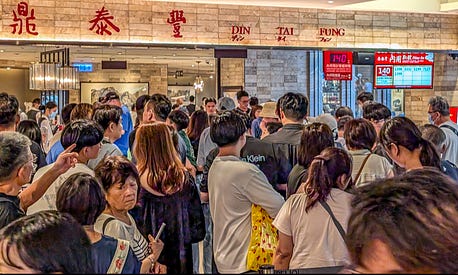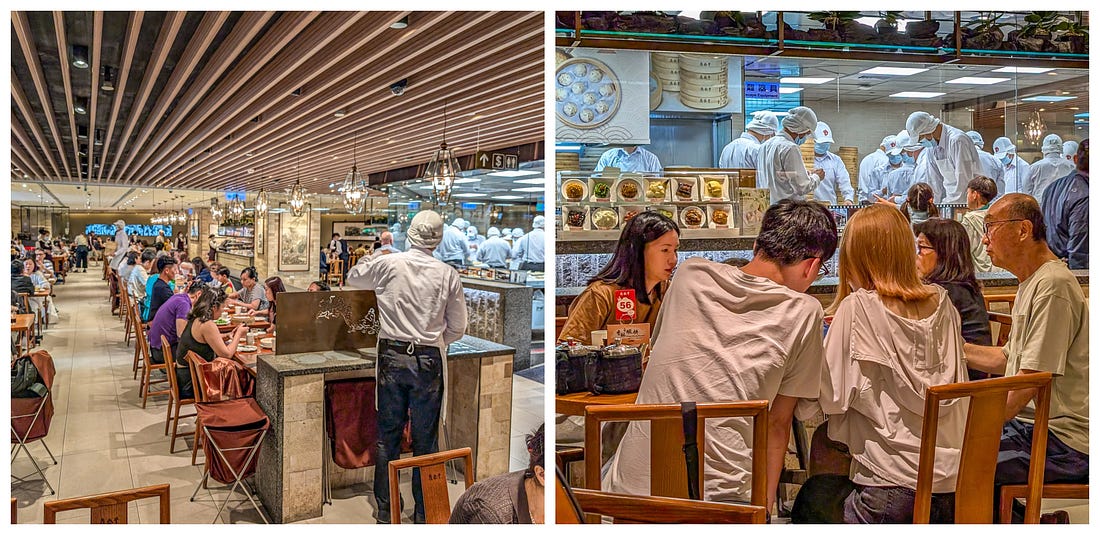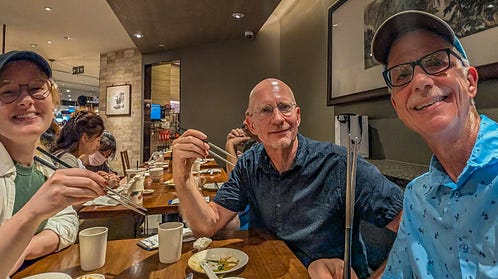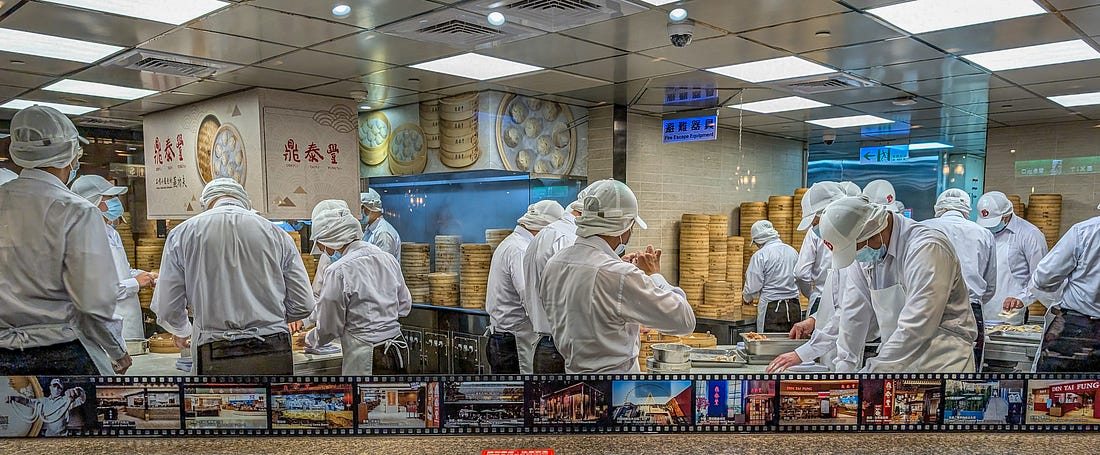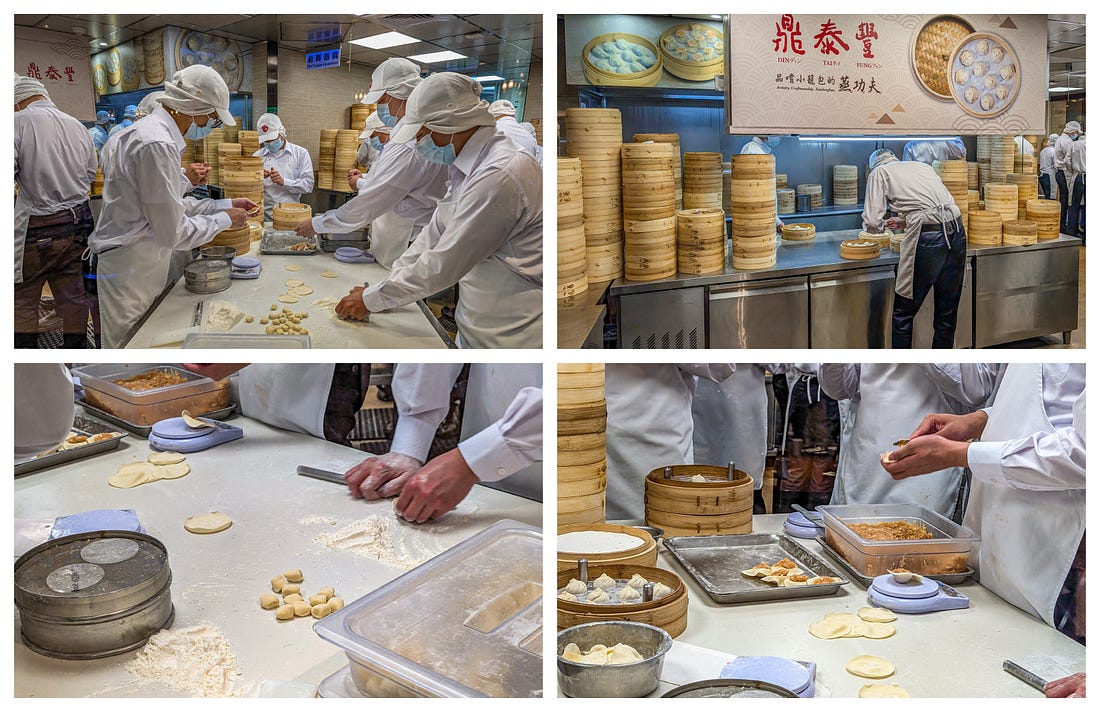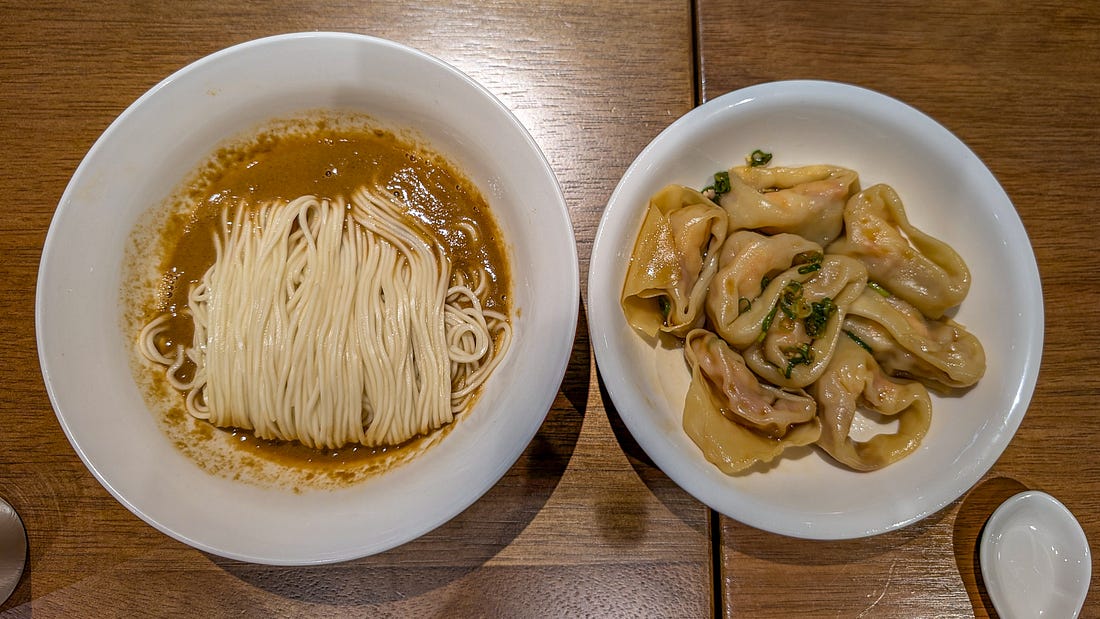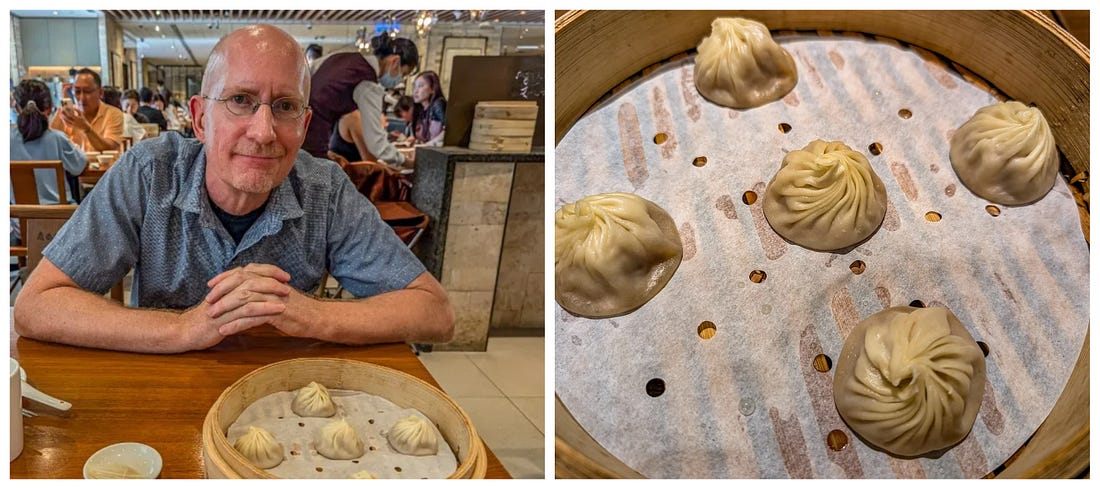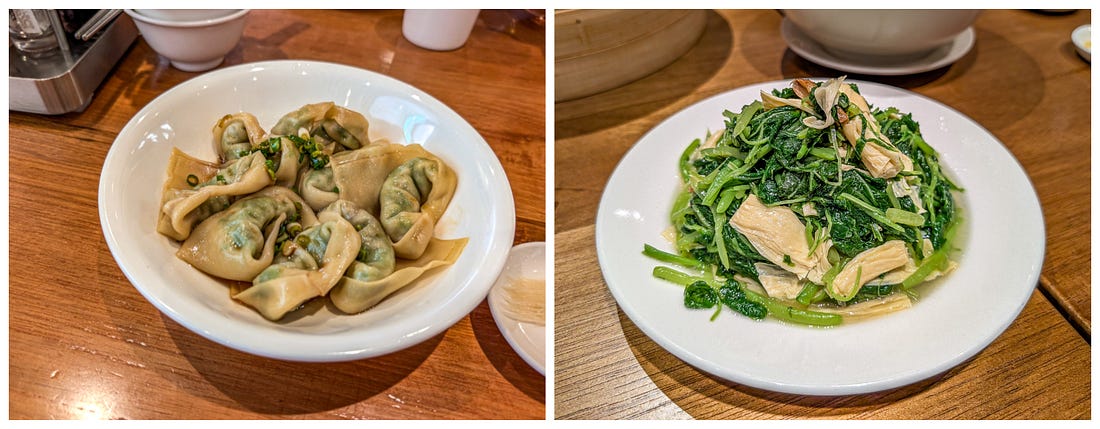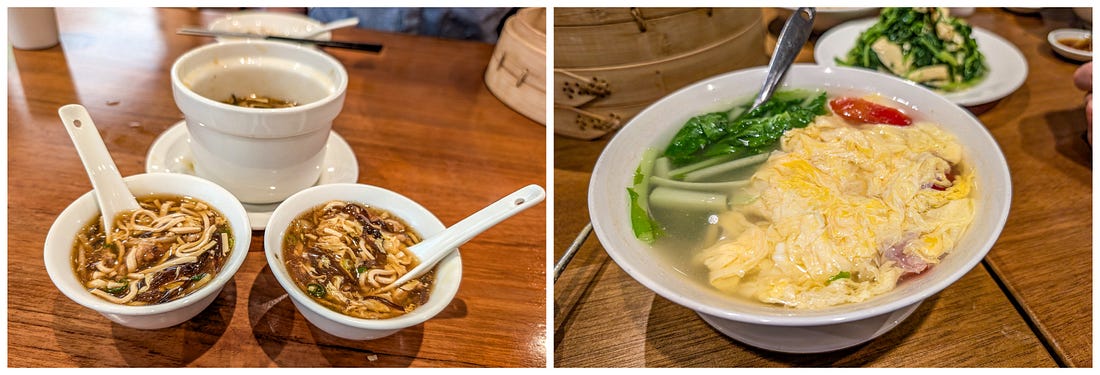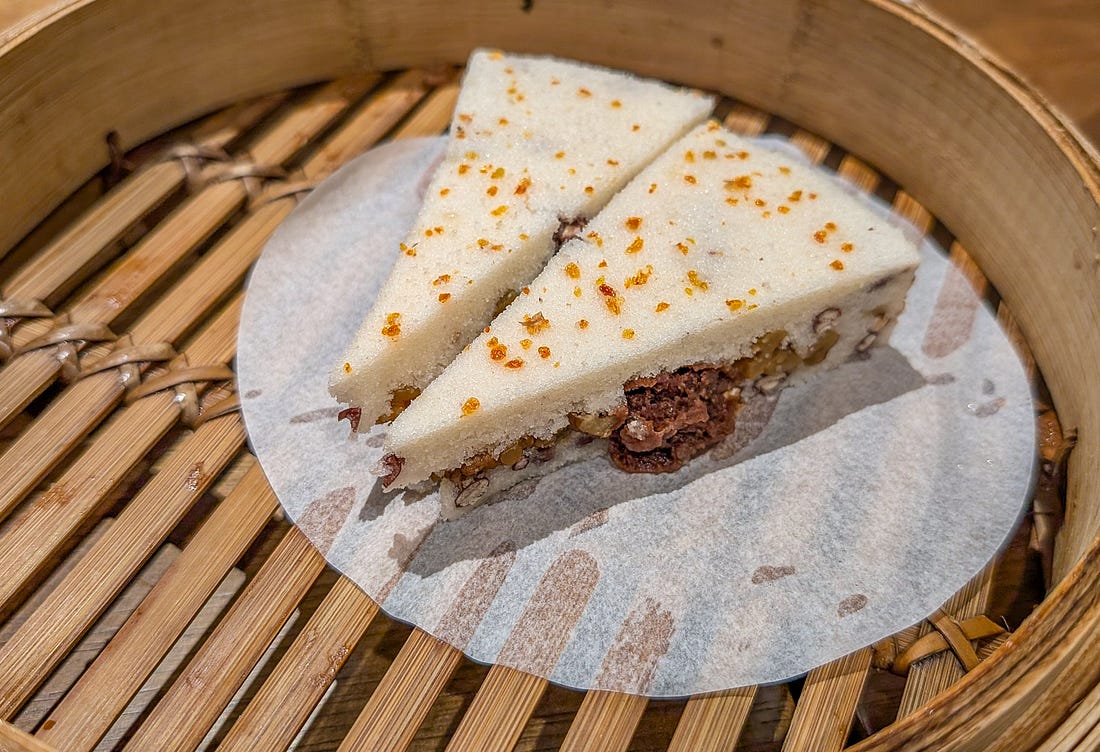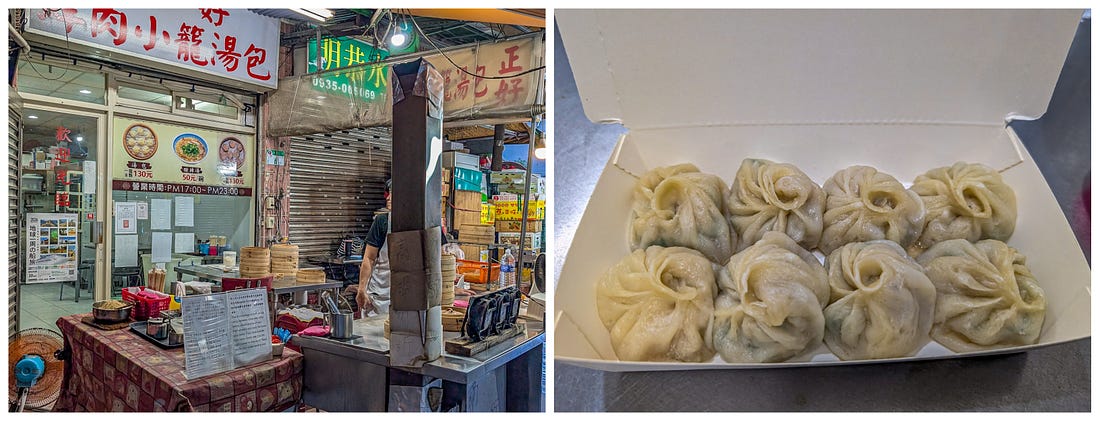Din Tai Fung is Taiwan's Most Beloved Restaurant. But Is It Worth a Two-Hour Wait?
- Brent and Michael Are Going Places <brentandmichaelaregoingplaces@substack.com>
- Hidden Recipient <hidden@emailshot.io>
Learn how to fly First Class for the price of Economy! Roame is the only tool that helps you find hidden first and business class flight deals for FREE. Search in real-time or set automated flight alerts. Try Roame's Pro version and set automated flight alerts! Use BM30 to save 30%. * Offer expires after September 15, 2025 Din Tai Fung is Taiwan's Most Beloved Restaurant. But Is It Worth a Two-Hour Wait?We're in Taipei, and everyone told us we absolutely needed to eat there. But oh, that line!As soon as we arrived in Taipei, Taiwan, everyone kept saying the same thing: Have you been to Din Tai Fung yet? and It’s a dumpling house — a Taiwanese institution. Get the xiaolongbao — it’s AMAZING. and It’s incredibly touristy, but we Taiwanese all love it too. So be prepared for the wait! Brent and I have loved eating our way across the globe, but we’re not necessarily “foodie” travelers, seeking out each destination’s most famous gastronomic experiences. And what was this about a long wait? Brent hates crowds. Then one afternoon, I was working in a Starbucks in a massive shopping mall food court, and I kept hearing a bell chime somewhere nearby. I looked over, and just off from the food court, I saw a huge crowd gathered in front of a large electronic reader board — sort of like what you’d find at a DMV in America. Then I spotted the words “Din Tai Fung,” and the penny dropped: this was the restaurant everyone had told us about. But it was this crowded even on a Wednesday afternoon? Earlier, I’d heard a young Taiwanese woman speaking English next to me, so I turned to her and said, “Is that the famous Din Tai Fung?” “It is,” she said. “You haven’t been?” I shook my head. “You must go. You haven’t really been to Taiwan if you haven’t been to Din Tai Fung!” “Do Taiwanese people love it that much?” “Oh yes, because it’s a place for families to go, and the food is so authentic.” That settled it: Brent and I really did need to go. Better still, one of our oldest and dearest nomad friends, Gillian, was visiting soon, and she is a foodie-traveler, so we figured we could take her. Alas, Gillian was only in town for a weekend, so we had no choice but to go to Din Tai Fung on a Saturday night — and, of course, they don’t take reservations. We arrived early, just after five, but when we got our number, it was still 832. “That will be about ninety minutes,” the host said, as if such a wait was completely normal. Fortunately, the food court was located in Taipei 101, once the world's tallest building, and its massive mall complex provided us with plenty to explore while waiting. And this “waiting period” is as good a place as any to give some background on Din Tai Fung. It started out as a Taipei cooking oil shop, but in the 1970s, they started also selling xiaolongbao — or “soup dumplings,” which were popular in China’s Jiangsu province, but not well-known in Taiwan. These dumplings are not cooked in soup, as the name might suggest, but rather use a unique process to have a kind of soup inside the dumpling. But more on this soon. Soup dumplings quickly outsold cooking oil, and Din Tai Fung grew in popularity as a restaurant — especially with former Chinese soldiers who remembered the dish from the mainland. The restaurant soon became a symbol of Taiwan’s food culture with — yes — xiaolongbao as its signature dish. Indeed, when Anthony Bourdain visited Taipei in 2012, he made a pilgrimage to a Din Tai Fung, helping the chain become so famous worldwide that it’s considered an example of “soft power” — a way for Taiwan to raise its profile and positively influence other nations, much like McDonald’s has done for the United States. Today, there are more than 170 Din Tai Fung restaurants in fourteen countries. And after waiting more than two hours, the restaurant beside that food court at Taipei 101 finally called our number. The host briskly led us to our table, and it soon became clear that to handle such huge crowds, everything was done quickly here. Food was delivered fast, and the dishes were cleared and the table reset even faster after guests left. Diners order via QR code, which is typical in Taiwan, and we picked everything that sounded good — including, of course, the xiaolongbao. It’s a pork dish, which is something Brent and I usually avoid. But coming here and not having the signature dish felt like going to France and not having a croissant. Anyway, the plan was to order more of anything we loved. While we waited for the food to arrive, I went to check out the glass-enclosed kitchen, which is another famous feature of Din Tai Fung: the cooks are on display. And there were a lot of them — enough to satisfy the appetites of thousands of nightly diners. They worked at a feverish pace, creating all kinds of dumplings but especially the xiaolongbao, which legend says was created in China by Huang Mingxian in the 1870s. First, the dough is rolled out, then carefully filled with a mixture of Kurobuta pork, chopped green onions, grated ginger, seasonings, and a frozen cube of pork and chicken broth. Yes, frozen. The broth melts during steaming — the secret of how the soup gets inside the dumpling. (Before the invention of refrigeration, they used aspic, or seasoned gelatin. Legend has it that the inventor accidentally mixed aspic into the meat before rolling it out, and when he steamed it, the soup dumpling was born.) Each dumpling weighs precisely 21 grams, and the workers carefully pinch each dumpling closed with eighteen folds: this is known as the “Golden Ratio.” The dumplings are then placed in a bamboo basket and steamed for precisely eight minutes, allowing the frozen broth to melt and create the perfect soup dumpling. I returned to the table just in time for the first dishes to arrive: noodles and wontons. I’d expected our soups first, but I’ve since learned that here in Taiwan, soup is traditionally served later in the meal. The noodles were thin and light, and the sesame-peanut sauce fairly subtle — maybe too subtle. It was fine, but we all agreed we wouldn’t order it again. But the shrimp and pork wontons were, frankly, fantastic: perfectly textured dough with garlic and green onion, and a spicy sauce that gave the dish a nice bit of heat. We’d just finished when the famous xiaolongbao arrived — along with instructions from the server on how best to enjoy them. She told us to place a dumpling into a wonton spoon, and to use a chopstick to poke a hole in it if we want to taste the broth. You can also slurp the dumpling whole or eat it with a sauce you’ve mixed yourself using raw ginger, and three parts vinegar to one part soy sauce. How were they? Regular readers know we’re not prone to hyperbole. BUT THEY WERE FRICKIN’ AMAZING! The pork and seasonings are incredibly complex, even before being complemented by the vinegar and ginger. And — yup! — they really do taste soup-ish: juicy, rich, and delicious. Shortly thereafter, our vegetarian dishes arrived: all-vegetable dumplings, wontons, and stir-fried morning glory. And even Brent, our resident semi-vegetarian, agreed the pork dumplings were far superior, and we immediately ordered another round. The last main dishes to arrive were the soups: egg drop for me, and the hot and sour for Brent and Gillian. My soup was by far the most disappointing dish of the meal for me. It was bland to the point of being flavorless. But Brent and Gillian both raved about their hot and sour soup. When I tried it, I wished I’d ordered that instead. Normally, I find the sour part too sour, but not in this case. Our dishes were briskly cleared, and the dessert we’d ordered was brought out: steamed red bean rice cake in a bamboo basket. I’ve had red bean desserts before, and I confess to being baffled by them as I find them to be relatively flavorless. That was true of Din Tai Fung’s version, though Brent and Gillian loved it. We were all stuffed. The cost of the meal? $62 USD — or just over $20 per person. Was it worth the two-hour-plus wait? Do you really have to ask? In fact, by the time we left, the stated wait time was up to two and a half hours. So in reality, more like three? Even so, no one was walking away. But this story has a twist ending. In researching Din Tai Fung, I not only learned that there are restaurants in the U.S., but also one in our hometown of Seattle — located within walking distance from Brent’s brother Craig’s house. We’ve eaten there many times, and we’d loved it — we just didn’t remember the name. So much for traveling the world for authentic experiences, eh? That’s okay. For one thing, I just looked up the Seattle menu online, and the same items we had that night would have cost more than twice as much back home: $135 USD (including America’s sky-high taxes and tipping). And they’re not exactly the same menu items. Based on the pictures I saw, some things have clearly been altered to suit American tastes. Although — interestingly — the portion sizes are the same. And even if the xiaolongbao are exactly the same recipe? We’re certain they taste much better here in Taipei. Update: A week after we visited Din Tai Fung, we were wandering the warren of alleys surrounding Linjiang Night Market (near our apartment), and we found a little shop selling xiaolongbao — with a long line of Taiwanese people. Nothing was in English, but we later deduced that the place’s name is translated as Zhenghao Meat-Stuffed Dumpling. We came back on a less-crowded night and ordered everything on the menu, which consists of only three items: xiaolongbao, hot and sour soup, and a different kind of dumpling. The soup and other dumplings were good, but the xiaolongbao was… excellent. The pork was once again fantastic, but this place uses more green onions (locally grown, apparently), which gives the dumplings a bit of a crunch and a surprising sweetness. Are they as good as the ones at Din Tai Fung? Oh, who can say?! It’s impossible to compare. But we can say that eight of these dumplings only cost $4.26 USD. Michael Jensen is a novelist and editor. For a newsletter with more of my photos, visit me at www.MichaelJensen.com. Learn how to fly First Class for the price of Economy! Roame is the only tool that helps you find hidden first and business class flight deals for FREE. Search in real-time or set automated flight alerts. Try Roame's Pro version and set automated flight alerts! Use BM30 to save 30%. * Offer expires after September 15, 2025 |
Similar newsletters
There are other similar shared emails that you might be interested in:




